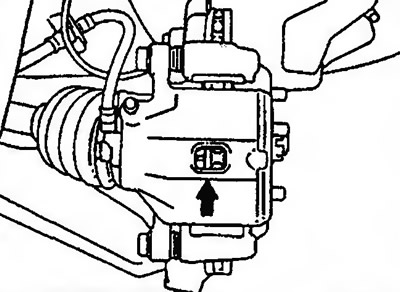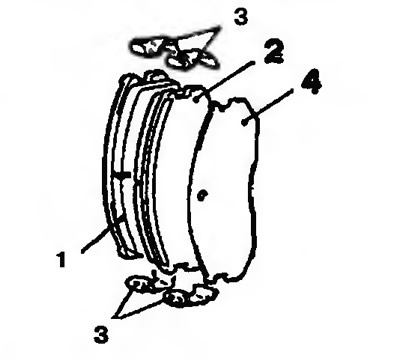
Pic. 14.10. Left brake shoe (internal) has a wear indicator. If the thickness of the lining is less than 2 mm, a squealing sound is heard as a warning while driving
1. Check the thickness of the brake pad through the hole in the caliper (arrow) (pic. 14.11). Nominal value: 10.0 mm. Limit value: 2.0 mm.

Pic. 14.11. Check the thickness of the brake pad through the hole in the caliper (arrow)
Attention! If the value is below the limit, the brake pads are changed on both sides together.
2. Remove the pin and wire the raised caliper to the car body (pic. 14.12).

Pic. 14.12. Remove the pin and wire the raised caliper to the vehicle
3. Remove the following parts from the caliper support (pic. 14.13): 1. Brake pads (left and right) with wear indicator, 2. Brake pad, 3. Retainers, 4. Outer plate.

Pic. 14.13. Remove the following parts from the caliper support: 1 - Brake pads (left and right) with wear indicator; 2 - Brake shoe; 3 - Clamps; 4 - outer plate
4. Measure the torque of the hub without brake pads.
5. Install the brake shoe and caliper and measure the brake slip torque.
